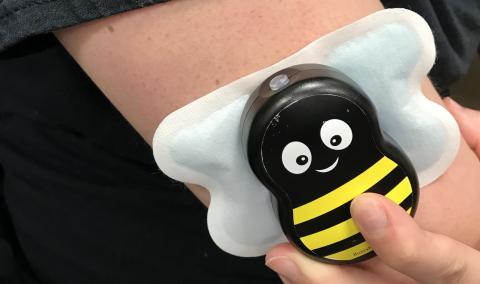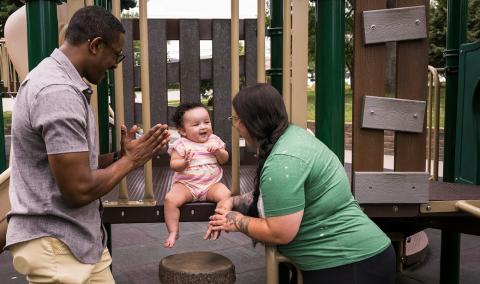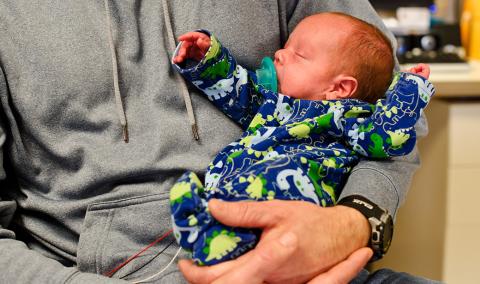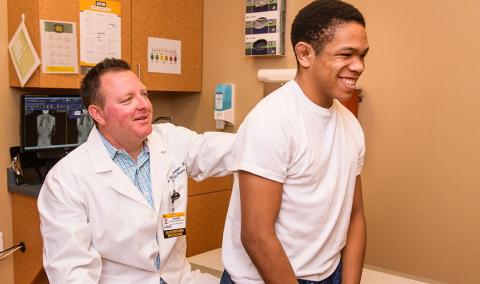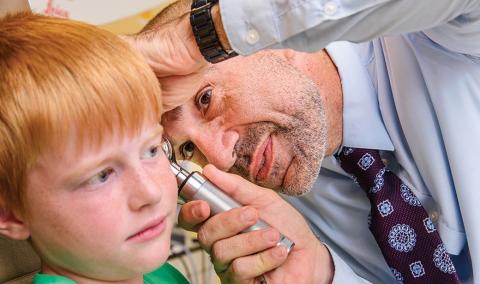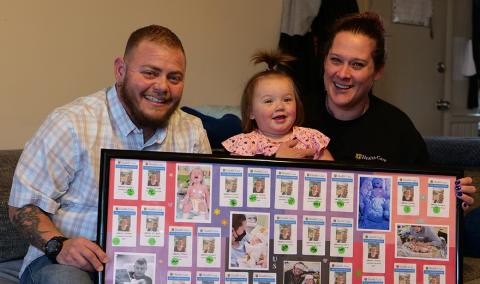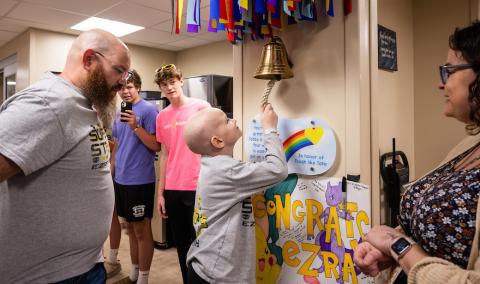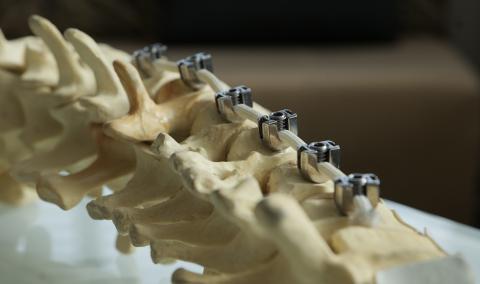As a parent, you want your baby to be healthy and in good hands. Thankfully, you can trust the Children's Health specialists at University of Missouri Children’s Hospital who are experienced in treating children with amniotic band syndrome and will work with you and your family every step of the way.
Amniotic band syndrome is a condition that happens when string-like bands of amniotic sac are caught or entangled around arms, fingers or toes while a baby is in utero. This causes a variety of problems.
Problems associated with amniotic band syndrome may include:
- Amniotic band disruption complex or sequence
- Bands or constriction rings
- Other deformities
- Swelling
- Syndactyly (two or more fingers are conjoined)
Treatment for babies with amniotic band syndrome
While your child is treated with a customized care plan, some treatment generalizations are possible. A child with amniotic band syndrome will need surgery. The exact type, number, timing and sequence of operations depends on your child’s specific needs.
When the fingertips are joined together (acrosyndactyly), our team usually performs the first operation to release the fingertips so that your child’s fingers move more independently. This procedure is done in the first three to six months of life.
After that, our team may perform follow-up procedures to deepen the web spaces between fingers so that your child’s finger has increased function. These operations may involve the use of skin grafts from the abdomen. Constriction bands are “contoured” by removing them and rearranging the skin and soft tissues on either side of the band to create a smooth, cylindrical shape to the digit or limb.
Occasionally, our surgeons may need to do even more complicated procedures to lengthen a child’s fingers, such as using distraction osteogenesis to stretch the bones or microsurgery to transfer toes to the hand.
Amniotic band syndrome is also known by other names including:
- Amniotic band disruption complex or sequence
- Annular constriction bands
- Congenital ring constriction
- Constriction band syndrome
- Streeter’s dysplasia
Frequently asked questions about amniotic band syndrome
Check out answers to common questions about this condition.
Does amniotic band syndrome cause my baby any pain?
No, typically there is no pain associated with this condition. However, occasionally, if your child has a very tight band that causes skin breakdown or infection, there may be minor discomfort.
What are the complications of amniotic band syndrome?
Amniotic band syndrome can cause many complications, such as:
- A minor groove or indentation in one of the limbs
- Amputations of fingers, toes or larger parts of the limbs
- Syndactyly (fusion) of multiple fingers or toes with multiple bands or constriction rings on multiple fingers or toes
Who gets amniotic band syndrome?
Amniotic band syndrome can occur in any newborn infant; it is not an inherited condition. This condition occurs in approximately one in 15,000 newborns.
What causes amniotic band syndrome?
Although there are many theories, researchers have not yet determined the cause of amniotic band syndrome.
What are the main issues related to amniotic band syndrome?
Common problems associated with amniotic band syndrome include:
What specialists will be involved in my baby’s care?
Initially, the hand surgeon and a certified hand therapist will treat your child. If your baby has clubfoot, a pediatric orthopaedic surgeon will be involved. If your baby has a cleft lip or palate, a craniofacial surgeon (who may also be a pediatric hand surgeon) will treat that condition. In addition, a developmental pediatrician may be involved in the care of your baby with amniotic band syndrome.
Will we get to know our surgeon?
Ideally, you will meet your surgeon either before or soon after your baby is born. You will meet with your surgeon several times before surgery. Many children with amniotic band syndrome require multiple surgeries, so you and your child often work with the surgeon for an extended period of time.
Related Conditions & Treatments
- Adolescent Medicine
- Chest Wall Deformities
- Down Syndrome
- Emergency Care for Kids
- Gastrostomy and Feeding Access Program
- Hyperbaric Oxygen Therapy
- Juvenile Diabetes
- Neonatology
- Pediatric Anesthesiology
- Pediatric Cancer
- Pectus Carinatum
- Pectus Excavatum
- Pediatric Cardiology
- Pediatric Dermatology
- Pediatric Development and Behavior
- Pediatric ENT (Ear, Nose and Throat)
- Pediatric Epilepsy
- Pediatric Eye Care
- Pediatric Gastroenterology
- Pediatric Infectious Diseases
- Pediatric Inpatient Rehabilitation
- Pediatric Nephrology
- Pediatric Neurology
- Pediatric Neurosurgery
- Pediatric Orthopaedics
- Pediatric Plastic Surgery
- Pediatric Primary Care
- Pediatric Psychiatry
- Pediatric Pulmonary Medicine
- Pediatric Sleep Medicine
- Pediatric Surgery
- Pediatric Surgical Services
- Pediatric Urology
- Pediatric Weight Management
- Sickle Cell Disease








